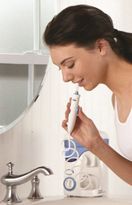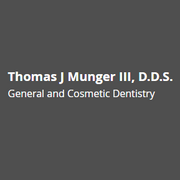
Brushing and flossing, along with regular visits to the dentist, are the foundations of optimal oral health. However, flossing isn’t always fun, and 36% of people say they’d rather do an unpleasant activity. Luckily, there is a better way. Water picking is not only easier and more comfortable, but also better for your oral health. Actually, Dr. Munger encourages his patients to not use string floss because it injures gum tissue and forces debris into periodontal pockets rather than clean them out. To encourage you to make the switch, here’s more information about how this works.
What Is Water Picking? 
Water picking or water flossing involves using a targeted stream of pressurized water to clean between your teeth. Instead of forcing a piece of waxed string into the spaces between them, which can be painful or injure your gums, a water flosser streams the liquid through a narrow tip to get in the crevices, removing food particles and plaque.
How Do You Use a Waterpik®?
A water flosser typically has three parts: a motor to pressurize the water, a reservoir, and a flossing tip. To use the flosser, turn the machine on and run the tip along your gum line with the waterpik tip pointing perpendicular to the tooth surface, pausing briefly between each tooth and making sure not to point it directly into the gum tissue. Allow the water to run out of your mouth and into the sink. Dentists recommend you start with your back teeth and work your way to the front, flossing the top ones first. Dr. Munger also recommends that you do not use a battery operated water flosser.
What Are the Benefits of This Method?
Water picking has several advantages over traditional flossing. If you have limited mobility, your dentist may recommend using a water pick as it’s easier to use than floss and improves your access to hard-to-reach areas. This device is also beneficial for people who have braces, dental implants, bridges, and crowns, which tend to trap food particles.
It’s also effective at removing plaque and reducing the risk of gingivitis without causing or increasing gum sensitivity. The gentle pulsating stream also stimulates the gums, improving circulation and gum health. In fact, a study published by the Journal of Dentistry revealed that people who use water flossers remove almost 25% more plaque from their teeth than those who use string floss.
If you need a dentist in the Anchorage, AK, area to help you take care of your oral health, call the office of Thomas J. Munger III, DDS. This experienced team has provided both general and cosmetic dentistry services to patients for over four decades. They offer innovative solutions like Fastbraces® to give you the smile of your dreams. Check out the practice online to learn more about their work, or call (907) 345-3744 to schedule an appointment.
About the Business
Have a question? Ask the experts!
Send your question

